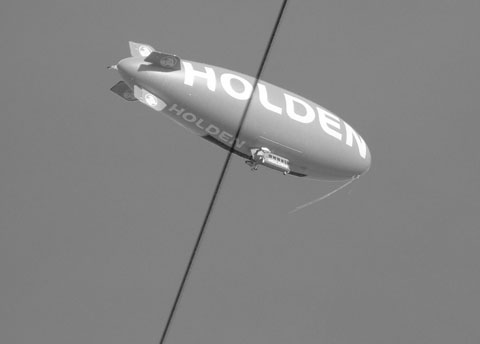Exactly three years ago I was visiting the National Aerospace Library at Farnborough, the historic home of British military aviation going back to 1904 through the Royal Aircraft Establishment, Cody’s first flight, and the Army’s Balloon Factory. The site now seems to consist largely of a series of business parks — though the famous air show is still held here, along with the Farnborough Air Sciences Trust and several large ex-wind tunnels. One of other the remaining remnants of Farnborough’s aviation heritage can be seen above: the British Army’s portable airship hangar (sans canvas), dating originally to 1912.

This is a reconstruction. The materials are nearly all original, apart from part of one arch, but the hangar seems to have stood at Farnborough as a whole only in 1912 and 1913; in October 1913 it was put in storage, only for parts of it to be pulled out during the war to form parts of other buildings.
This is part of the Historic England entry on the hangar:
Early in 1912 the army began to test portable sheds which would allow airships, with their necessary supplementary gear, to be deployed on operations as necessary. The portable airship shed, was under construction at Farnborough in March 1912 at a cost of £850. It was designed to be big enough to accommodate a similar range of airships (Gamma, Eta, Beta and possibly Delta) to sheds ‘A’, ‘B’, and ‘C’. In order to test the portable shed with dirigibles the Aldershot Chief Engineer (later Sir) G Scott-Moncrieff suggested that it be taken to the Central Flying School at Upavon as space at Farnborough was limited due to the erection of RAF and RFC sheds there at that time. The canvas for the portable airship shed was undergoing repair until June 1912 and in October 1913 a potential site was found at Tidworth Pennings, Wiltshire, for testing the shed. However, all action regarding the provision for accommodation for the airship squadron came into abeyance at the end of October and it is thought that the project was abandoned. After October 1913 the portable airship shed was dismantled and held in storage. It might have been intended to re-erect it in Wiltshire or at the RAF Farnborough site, but the result was that the shed was divided into two parts and formed part of the structure for two separate buildings on the factory site at Farnborough. The lower part of the frame became building Q65 (to become the fabric workshop) erected in 1916-17, and the upper became building R51 (to become the forge and foundry) erected in 1914.
I suspect this portable hangar was connected to a very early, emerging concept of air control by airships which was cut short by the outbreak of the First World War. In his speech introducing the 1913 Army Estimates, the Minister for War Colonel J. E. B. Seely, tried to explain why the British army did not have, and did not need, large airships like the German army:
Our Army is an Expeditionary Army; to use a Zeppelin for the purpose of, let us say, the reinforcement of Egypt, or the sending of a large body of men over the frontier to India—operations that are not very likely, but against which we are obliged to guard—to use a Zeppelin in these instances is almost impossible. This gigantic engine could not be taken there, or, if it could be, it would be with the utmost difficulty, and the provision of hydrogen for it would be an almost impossible problem. We therefore decided that the Army should have small dirigibles, which could be packed up in boxes, put on motor lorries, or on ships, and sent wherever they are required. Those we have got.1
These airships were Beta, Gamma and Delta (with Eta under construction), all of which were indeed very small compared with the German Zeppelins. In the middle of the 1913 phantom airship panic, Seely was on the defensive regarding government airship policy, and perhaps went too far in trying to persuade the House of Commons that these airships were ‘an advance upon anything which is known to be in the possession of any foreign Power’.2 But the idea of using small airships as part of expeditionary forces was a real one, no doubt inspired by the Italian successes against the Turks in Libya in 1911 and 1912. In June 1914, as I discussed a few months ago, two RN lieutenants were at Berbera scouting for a forward airship base to use in operations against the Mad Mullah. Presumably, had the First World War not intervened, the portable hangar would have been been sent out to Somaliland along with an airship or two, and early British airpower history would have looked quite different.
![]() This work is licensed under a Creative Commons Attribution-NonCommercial-NoDerivatives 4.0 International License.
Permissions beyond the scope of this license may be available at http://airminded.org/copyright/.
This work is licensed under a Creative Commons Attribution-NonCommercial-NoDerivatives 4.0 International License.
Permissions beyond the scope of this license may be available at http://airminded.org/copyright/.







Pingback: Prelude: Hot air and warm earth – Great Rift Valley Run